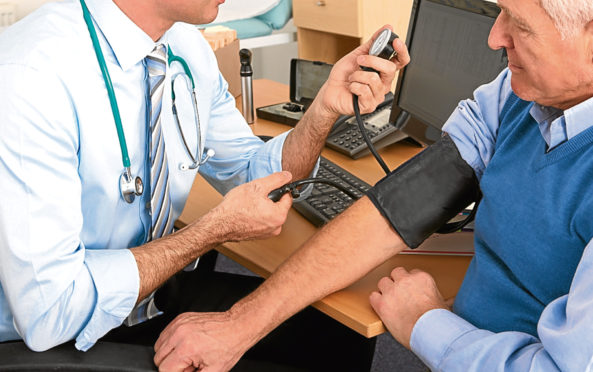
The Scottish Government faces “a significant challenge” to increase the number of GPs working in the country, according to the public spending watchdog.
A report published by Audit Scotland on Thursday said an ageing clinical workforce and problems with recruitment and retention will make it difficult for the Government to meet its target to boost the number of GPs by at least 800 over the next decade.
A rise in Scotland’s elderly population is also described as putting extra pressure on primary care services, with the number of people over the age of 75 living in the country estimated to rise by 27% between 2016 and 2026.
The Audit Scotland report noted although Government commitments to train additional GPs, nurses and midwives are on track, it is not clear how many will go on to join the primary care workforce on the ground.
The watchdog also highlights there being a lack of national data on current workforce numbers, costs, activity and demand.
A “data gap” makes it hard for the Government to plan the workforce effectively, the watchdog said, making it difficult to assess whether the new GP contract is achieving its aims.
It also concluded much more needs to be done to explain the changes in primary care to the public and how they affect the rest of the health system.
Caroline Gardner, the Auditor General for Scotland, said: “Scotland’s primary care workforce is under pressure and operating in an uncertain climate.
“That makes detailed planning for the future even more important.
“To date, the Scottish Government has introduced major policy changes without a reliable basis for its plans.
“It now needs to get a much clearer picture of the workforce and set out detailed plans addressing how its initiatives will improve patient care and deal with future demand on services.”
Dr Alasdair Forbes, deputy chairman for policy at the Royal College of General Practitioners (RCGP) Scotland, noted the country’s “existing GPs are struggling”.
He said: “Audit Scotland reinforces our call that policymakers need to plan the workforce based on whole-time equivalent figures, and not headcount, to ensure accuracy in the planning and reporting of recruitment efforts.
“Only by doing this will effective steps be able to be taken to reverse a trend of declining GP capacity in Scotland.
“The Scottish Government needs to urgently improve its understanding of future demand for services, and how efforts to improve training, recruitment and retention of GPs will meet estimated demand.
“General practice is the backbone of a sustainable NHS and needs to be properly funded if it is to continue to provide the high-quality care that meets the current, and future, needs of patients.
“An increase in funding for general practice to 11% of the Scottish NHS budget would enable expansion of the GP workforce as well as recruitment of much-needed members of the wider primary care team, delivering services which are at their best where they are most needed.”
The British Medical Association’s Scottish GP committee deputy chairman Andrew Cowie also said: “It is worrying to see the level of work the Scottish Government needs to do on this.
“The commitment is very welcome, but the Audit Scotland report leaves little doubt that we need more details on the plans urgently.
“We are very clear that the GP contract has set Scotland on the right direction of travel and offers the best hope for sustainable general practice, however it is equally clear from this report that there is still a lot of work to be done, and the pace of change must increase over the next 20 months if we are to achieve the necessary transformation of primary care.
“Indeed across Scotland, we need all partners – the Scottish Government, Health Boards, Integration Joint Boards and partnerships – to work together to meet their commitments to the contract in full.
“Only then will we start to see an increase in the number of GPs in Scotland, and the future of primary care improved.”

Enjoy the convenience of having The Sunday Post delivered as a digital ePaper straight to your smartphone, tablet or computer.
Subscribe for only £5.49 a month and enjoy all the benefits of the printed paper as a digital replica.
Subscribe